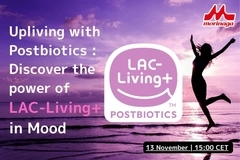Low-Energy-Dense Diets Linked With High Diet Quality
Compared with participants consuming a high-energy-dense diet, those with a low-energy-dense diet consumed fewer calories but ate more food, by weight, from most food groups.
The researchers studied reported food intakes of 7,500 adults who participated in the government's Continuing Survey of Food Intakes by Individuals. Their diets were classified as low-energy-dense, medium-energy-dense and high-energy-dense. For each group, the percentage of people consuming various foods and beverages and the average amount of foods and beverages they consumed was determined along with their average nutrient intakes.
Compared with participants consuming a high-energy-dense diet, those with a low-energy-dense diet consumed fewer calories but ate more food, by weight, from most food groups. Those eating the low-energy-dense diet included more foods that were high in micronutrients and water but low in fat, such as fruits and vegetables, fewer non-water beverages and higher intakes of several important micronutrients including vitamins A, C and B6, folate, iron, calcium and potassium.
The researchers conclude that a low-energy-dense eating plan "allows individuals to reduce their energy intake without necessarily decreasing the amount of food they consume or compromising their dietary quality." To achieve a low-energy-dense diet, the researchers recommend eating a variety of fruits and vegetables; low-fat and reduced-fat dairy products, grains, meat and meat alternatives."

















